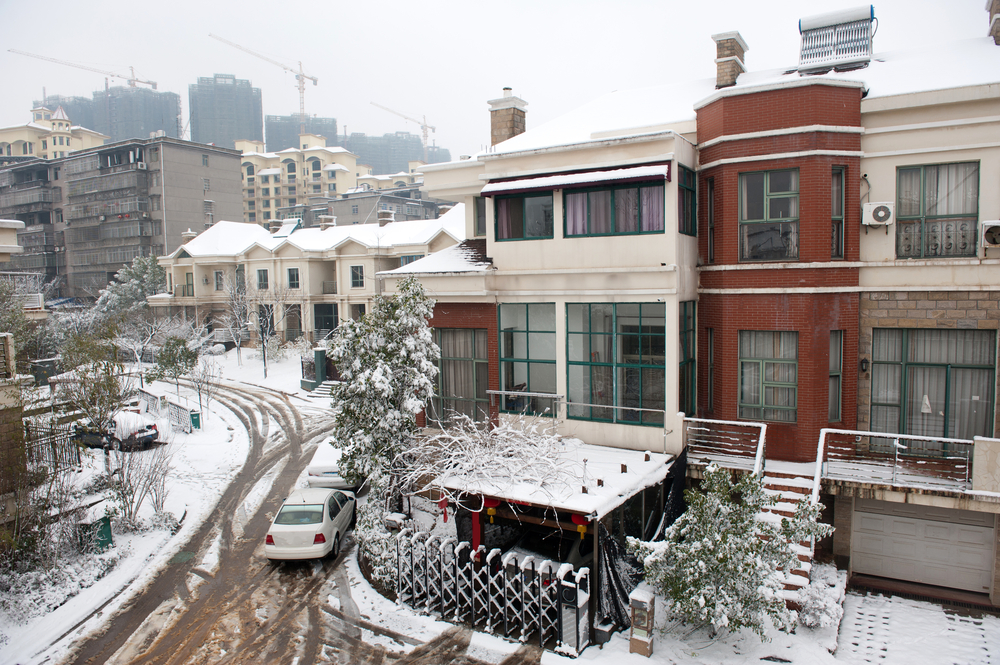The winter of 2015 will be remembered in the Northeast for thevast amount of snow deposited by Mother Nature.
|While snow-covered roofs certainly contribute to the beauty ofthe season and create a picture of serenity, new-fallen snow whichmelts then refreezes can place stress on the roof of a home orbusiness. This can also result in mixed success when it comes torecovering on paid snow-removal claims.
|From a liability perspective, these are interesting cases.
|The essential question which must be answered is: What is the“reasonable standard of care” that should be used by a worker whomay be standing in two feet of snow on a roof? The answer to thatdepends on the underlying circumstances of the work beingperformed, and how well the resulting damages are documented. Arecovery effort may not be successful if there is no evidence tosupport the adverse party did not exercise “reasonable care underthe circumstances.”
|Anyone who has ever endeavored to shovel snow from a roof knowsthat there are reasonable arguments that such care was extended.There are also many examples of an obvious lack of care or haste onthe part of a contractor who is attempting to clear as many roofsas possible in the shortest period of time. Properly investigatingand documenting the loss facts pertaining to these incidents canmean the difference between a successful recovery and a claimdenial.
|Related: Do's and don'ts for safely removing snow from yourroof
|Some of the obvious scenarios of not using reasonable careinvolve the use of sharp tools, such as ice picks, snow shovels,metallic rakes or mechanical snow removal equipment. Other poorworkmanship includes improperly removing the snow, creatingunbalanced loading. Ice, as opposed to snow, requires considerablymore care and effort to remove safely. Ice usually collects in thecorners of a roof and near gutter attachments, so a worker needs totake care not to damage the fragile roofing materials and nearbystructures.
||
(Photo: Shutterstock)
|Proper photographic evidence is key to show the exact area wherethe snow or ice had collected, was removed and the damage thatresulted.
|The field claims representative should inquire whether theinsured has any pre-loss photos of the condition to establish areference as to the amount of snow or ice that existed. Photos ofthe roof itself in the pre-event condition can also establishsubsequent liability and create viable evidence.
|In snow-removal cases, the facts as to why the insured initiallyhired the contractor to remove the snow from the roof should beestablished. Questions as to whether the assignment was for ice-damprevention or weight relief should be answered.
|The vast majority of snow-removal jobs are performed to relieveweight load from a roof. Depending on the height and size of theroof, the removal can often be performed from the ground with along-handled, non-metallic rake, thus avoiding potential damagecaused by walking on the roof itself. In addition, a worker neednot remove every inch of snow from a roof in order to accomplishthe goal of relieving weight.
|It is prudent to be aware that shingles are fragile, as aresolar panels, which are becoming more popular in the Northeast. Aworker who rubs and scrapes a roof or solar panels until every lastounce of snow is gone is likely to cause damage. Leaving a fewinches of snow on the roof accomplishes the weight relief goalwhile protecting the shingles themselves — and not doingso could reasonably be construed as negligence in the event damageresults from direct contact with the shingles.
|As in most subrogation efforts, understanding the standard for“reasonable care,” developing a theory of negligence, gatheringevidence and performing a thorough investigation makes thedifference in success or failure.
|David C. Martin is a senior recovery specialist at Holbrook,N.Y.-based Spartan Recoveries LLC.
|Related: Calling all landlords: Be sure snow removal is doneright!
|We're on Facebook, are you?
Want to continue reading?
Become a Free PropertyCasualty360 Digital Reader
Your access to unlimited PropertyCasualty360 content isn’t changing.
Once you are an ALM digital member, you’ll receive:
- All PropertyCasualty360.com news coverage, best practices, and in-depth analysis.
- Educational webcasts, resources from industry leaders, and informative newsletters.
- Other award-winning websites including BenefitsPRO.com and ThinkAdvisor.com.
Already have an account? Sign In
© 2024 ALM Global, LLC, All Rights Reserved. Request academic re-use from www.copyright.com. All other uses, submit a request to [email protected]. For more information visit Asset & Logo Licensing.








